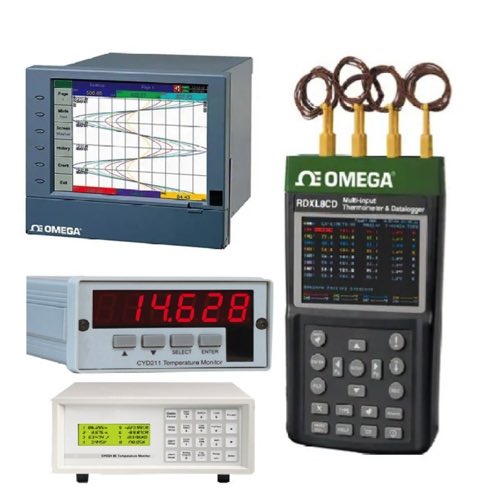Data Acquisition

Data acquisition products are designed to capture, record, and analyze critical measurement data across a variety of industrial applications. These products includes everything from portable handheld data loggers to high-speed, multi-channel data acquisition systems that integrate seamlessly with temperature sensors, pressure transducers, flow meters, and other instrumentation. Built with precision and durability in mind, data acquisition solutions help engineers and technicians gather real-time data needed for process control, quality assurance, and research and development.
Data acquisition systems support a wide array of input types including thermocouples, RTDs, strain gauges, voltage, and current signals. These systems are often modular, allowing users to scale their setups based on the number of channels or specific measurement requirements. Many data acquisition devices feature user-friendly software interfaces that simplify setup, configuration, and data analysis, offering graphing, reporting, and alarm features to optimize monitoring and troubleshooting. The Ethernet, USB, and wireless connectivity options make it easy to integrate these devices into existing control networks and remote data collection applications.
Analog and Digital Control Signals: The Basics
Digital Signals
Digital signals are represented in either a true or false. There is no gray area with digital signals. An example of this might be a light switch. A light switch is either on or off. Another example of this might be a motor that is running or not running. Digital signals can be generated with both AC and DC circuits with varying voltages, currents and resistance. Some practical examples of using digital signals in an industrial environment might be if a pump is running or not running or a whether a valve is open or closed.
Analog Signals
Analog signals convey information in the form of a range. A light switch might be on or off as a digital signal, but a dimmer switch would be an analog signal. It can be on or off, but it can also be somewhere in between. A practical example of using analog signals in an industrial environment would be if there is a need to measure the level of a tank; whether it's full, empty or somewhere in between. Analog signals can take many different forms with some of the more common being a 4 to 20 milliamp signal or a 0 to 5 or 0 to 10 volt signal.
Communication
Communication in a device can either be sent or received. Whether that data is sent or received depends on the type of information. Is there a need to monitor the status of something? If so, an input needs to be received about that information. Is there a need to control something? If so, an output needs to be sent about what needs to occur. Receiving inputs and setting outputs are both things that can be accomplished by using both digital and analog signal types. Therefore, the signals are referred to as analog outputs (AO), analog inputs (AI), digital inputs (DI) or digital outputs (DO).

